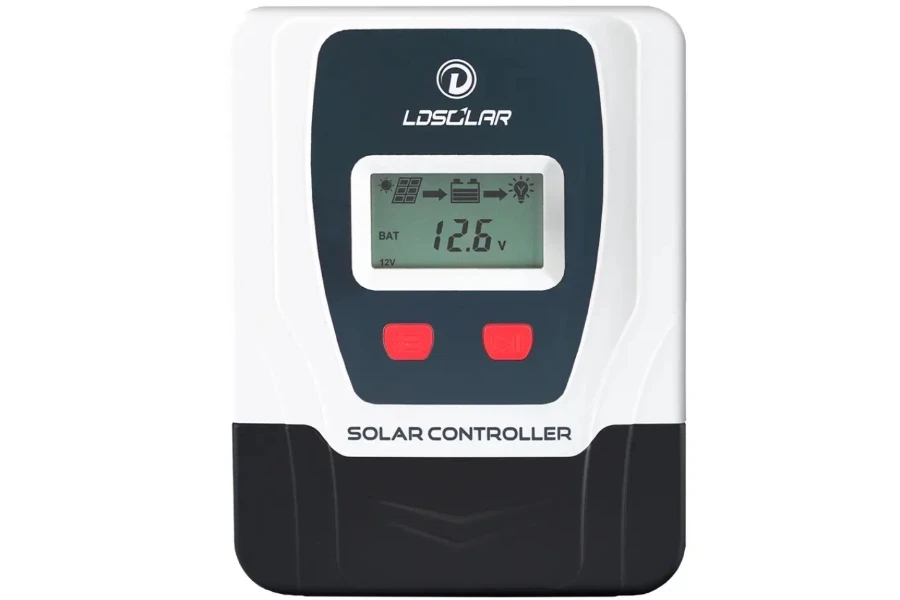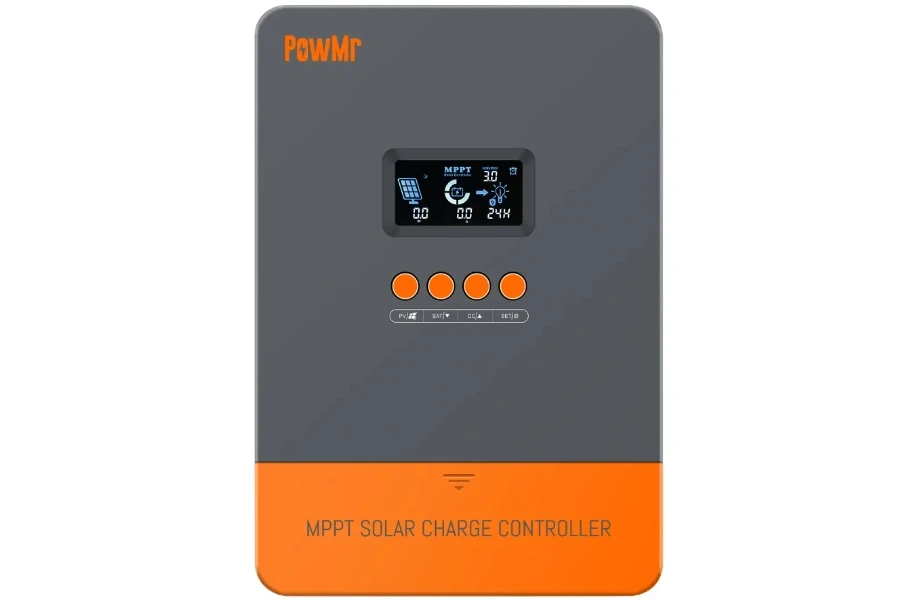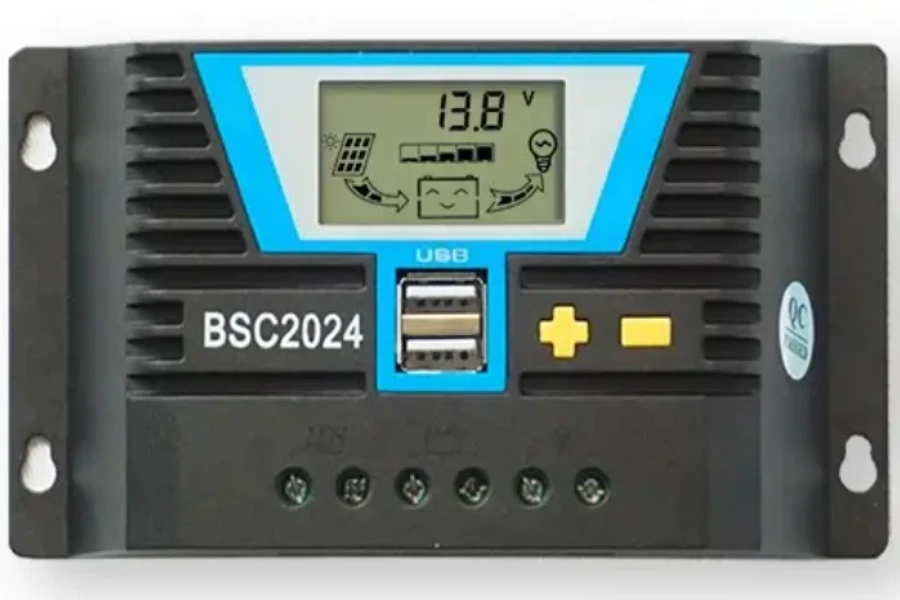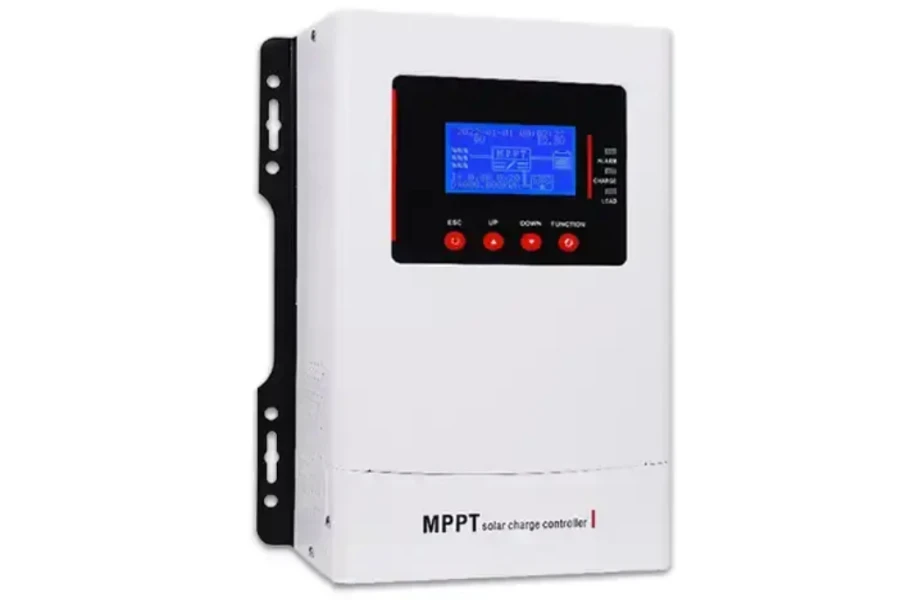In our quest for sustainable energy solutions, solar power has emerged as a reliable option. Within these systems, solar charge controllers play a vital role, not only regulating the flow of electrical energy but also safeguarding batteries from overcharging, helping to ensure a system’s longevity and efficiency.
This article delves into the world of solar charge controllers, exploring their fundamental definitions and various classifications, helping you understand their pivotal role in this growing industry. In addition, we’ll provide practical advice on how to select the right charge controller for your needs.
Table of Contents
What are solar charge controllers?
Different categories of solar charge controllers
Controller selection options
Summary
What are solar charge controllers?
Solar charge controllers are a key component of solar power systems, regulating the current and voltage that flows from the solar panel to the battery. Its core role is to protect the battery from overcharging and over-discharging, prolonging battery life and maintaining the system’s stability.
The charge controller monitors the status of the battery and adjusts its charging parameters to ensure that it charges optimally while preventing wasted energy. In addition, it improves the efficiency of the entire solar power system, especially when operating under different environmental conditions and load demands.
For example, advanced charge controllers are equipped with maximum power point tracking (MPPT) technology, which helps to capture the maximum amount of power possible from the solar panels.
Typically, solar charge controllers include a series of circuit boards that monitor and regulate the current and voltage from the solar panel to the battery. It also includes a display that shows key information, such as charging status and battery level.
Current capacity is a core parameter when choosing a solar charge controller as it will determine the capacity of the solar panel and the battery. Voltage levels, mostly in the form of 12V, 24V, and 48V varieties, are also important and must be compatible with the rest of the system.
Advanced modules may include other features such as remote monitoring, LCDs, multiple battery type compatibility, and more. Overall, correct selection of a solar charge controller is essential to ensure optimal performance and reliability of the system.
Different categories of solar charge controllers
Solar charge controllers are mainly categorized into two types: pulse width modulation (PWM) controllers and maximum power point tracking (MPPT) controllers.
PWM controllers

PWM controllers control the battery charging process by adjusting the length of the “pulse width.” This control method involves switching between charging current and voltage to simulate the charging demand of the battery.
As the battery charge nears completion, the PWM controller reduces the strength of the charging current to prevent overcharging, which helps to extend a battery’s life. This approach is similar to how the charging process is continually “dripped” to keep the battery in an optimum state.
This type of charge controllers has the following advantages:
Cost-effective: PWM controllers are typically cheaper compared to MPPT controllers and are suitable for installations where only a limited budget is available.
Simple and reliable: These controllers are simpler in design, reliable in operation, and have low maintenance requirements.
Suitable for small systems: For small residential systems or portable solar applications, PWM controllers offer an affordable solution.
Great system compatibility: Suitable for a wide range of standard voltage systems, such as 12V, 24V, etc., and easily compatible with a wide range of solar modules.
Superior charging efficiency: Under proper conditions, the PWM controller is effective in helping to maintain a battery’s longevity.
These types of systems have various application scenarios:
Home solar systems: PWM controllers are a cost-effective option for residential systems where power demand is not exceptionally high.
Off-grid and portable applications: For example, campers, boats, cabins in remote areas, etc. PWM controllers can provide a steady supply of energy in these situations.
Projects with limited budgets: Solar street lights, small pump systems, or other applications with low power requirements.
Overall, PWM controllers are cost-effective, simple, and reliable. They are widely used in many solar applications and are particularly suitable for small, budget-limited systems where high efficiency is not essential.
MPPT controllers

MPPT controllers are an efficient type of solar charge controller widely used in solar power systems of various scales. Their core ability relates extracting the maximum possible power from solar panels, thus increasing the energy efficiency of the entire system.
MPPT controllers locate the maximum power point (MPP) by monitoring the output voltage and current of the solar panels on a real-time basis and adjusts the load resistance or conversion rate accordingly. By doing so, they can optimize the performance of the panels under different light conditions and temperatures, resulting in higher efficiency than PWM controllers.
This type of charge controller has the following advantages:
High conversion efficiency: MPPT controllers can increase the efficiency of energy conversion from solar panel to battery, which is generally 20% to 30% higher than PWM controllers.
Adaptability to illumination conditions: They can optimize performance in different illumination conditions, particularly during winter or on cloudy days.
Suitable for different panels: MPPT controllers can handle higher voltage panels, providing users with more options for configuration.
Long-term cost reduction: Although the initial investment is higher, improved efficiency and energy harvesting capability significantly reduce long-term operating costs.
These types of charge controllers have the following advantages:
Large-scale commercial and industrial solar projects: The high efficiency of MPPT controllers plays a key role in these projects that require large amounts of power output.
Adaptability: MPPT controllers maximize the use of solar energy in areas with erratic light intensity or short daylight hours, and ensure that the system also operates efficiently.
Compatibility: Suitable for complex systems that require multiple types of panels and battery configurations, they provide increased flexibility.
Expandability: MPPT controllers are an ideal option when there is a need to improve the performance of an existing solar system.
In short, MPPT controllers occupy an essential part in demanding solar applications due to their high efficiency and adaptability. Despite their higher costs, they provide more energy savings and the ability to save on long-term operating costs.
Therefore, they may be more suitable for solar systems that are large, complex, or must operate in environments with unstable light.
Controller selection options

A PWM controller should be selected in the following situations:
- Your system is small (e.g., residential use or a small off-grid system) and you have a limited budget
- The system does not require maximum energy extraction from the solar panels and is more concerned with cost-effectiveness
- You’re seeking a simple system that is easy to install and maintain

MPPT controllers should be selected in the following cases:
- Large-scale systems or those seeking high-efficiency applications (e.g., commercial or industrial use)
- Application in areas with erratic light intensity or high seasonal variations
- Long-term use is required, thus making it worth the higher investment
Summary
Before purchasing a charge controller, you must take several factors into consideration. These include:
- System compatibility: Make sure the selected controller is compatible with your solar panels and batteries.
- Budget: Pick the appropriate controller based on your budget. Remember that cheaper controllers may be inefficient, while expensive controllers may offer more features and higher efficiency.
- Brand and quality: Choosing a well-known brand and a high-quality product can increase the reliability and efficiency of your system
- Warranty and service: Check the warranty period of the product and the customer service offered by the manufacturer
Once you have determined all of these factors, find your perfect system among the thousands of options from trusted sellers on Alibaba.com.



